On October 18, 2022, Memphis mayor Jim Strickland announced a plan to demolish the Mid-South Coliseum to build a new stadium for the four-year-old Memphis 901 FC professional soccer team. The proposed $684 million project would involve renovating three venues – FedEx Forum, AutoZone Park, and Simmons Bank Liberty Stadium at the old Mid-South Fairgrounds – and constructing a new stadium. The City of Memphis is asking the state to contribute $350 million to the ambitious project, which the mayor believes, would help retain the city’s pro sports teams and give Memphis an economic boost. The mayor estimates the four projects would have a one-time $1.3 billion impact. The plan calls for extensive renovations for FedEx Forum and Liberty Stadium. The 901 FC, part of the USL Championship League, currently plays its home matches at AutoZone Park, home to the Memphis Redbirds, a minor league baseball franchise. In his announcement, the mayor noted that sharing AutoZone Park is difficult, and the field has been damaged to the point that a new soccer-specific one is required. In addition to state funding, the multi-venue overhaul would be funded in part by raising the hotel tax, as well as extending two tax rebates that have helped subsidize the FedEx Forum.
Representatives of the Coliseum Coalition, the grassroots nonprofit that helped defeat a previous demolition plan that surfaced in 2014 and are working to save and reactivate the Coliseum, noted that the City of Memphis could save $10 million in demolition costs by instead building a new soccer stadium at a different site. “The Mid-South Coliseum is a beloved, paid-for civic asset. Two separate assessments, including the City’s own, found the building to be in excellent shape,” said Coliseum Coalition co-founder Marvin Stockwell. “The Coliseum could be a place with the potential to be Memphis’ next revenue-positive, adaptive-reuse success, and the revenue generated from the Coliseum could fund other amenities around the Liberty Park development.” Coalition officials say they would like to see more due diligence spent on evaluating other possible sites in a transparent process that is open to public questions and input. “If the mayor’s plan proceeds, we’d like a pledge from the city that the Coliseum will not be demolished until all the money for the new stadium is in the bank, and that the city has exhausted all other possible sites,” Stockwell added.
The Mid-South Coliseum in Memphis, Tennessee, opened to the public on November 24, 1964, after several years of development and construction for $4.7 million. The Coliseum was the first public auditorium in Memphis to be planned as an integrated facility rather than a “separate but equal” segregated building. The mid-century design of the Mid-South Coliseum is similar to other coliseums in Florida and Alabama. However, the arena in Alabama was designed, as were other Deep South public buildings of the era, as a segregated facility. Performances before integrated audiences occurred at the Mid-South Coliseum as soon as the building opened, and it immediately became the area’s hot spot for music, sports, and other mass entertainment. Everything from hockey, ice shows, basketball, meetings and banquets, concerts, trade shows, and conventions could be held in the building.

The 9,200-seat facility was designed with modern power and lighting systems, fire and smoke detection, sound systems, as well as radio and television systems. The primary public space, the arena, was lit with incandescent and color-corrected mercury vapor lights. The lighting system was state-of-the-art in the 1960s and is still used today. So that the lighting could be controlled, the Coliseum contains no windows. Tracor, Inc., an acoustic and sound reinforcement consulting firm, helped build the ceiling for optimum sound effects. Suspended acoustic tiles line the dome ceiling and the glazed tile walls are perforated and filled with acoustical material, even the arena seat bottoms are perforated. The interior of the Mid-South Coliseum still has terrazzo floors, tile walls, metal stair balusters, re-upholstered original seating, an original lighting system, and acoustical panels. Some areas were modernized with slightly dropped ceilings and recessed lighting.
The first event held at the Coliseum was the Ringling Brothers Circus which attracted a broad audience. The next program and the first stage show was the Goodwill Revue, sponsored by Memphis radio station WDIA, which holds a place in the history of popular music in the 20th century South. WDIA was the first Southern radio station to adopt an all-African American format, having done so in 1948. Cultural and music historians emphasize that the success of WDIA led to radio stations across the country adopting black news and entertainment formats. Brook Benton headlined the November 28, 1964, show. Other notable artists were Dee Clark, Johnny Nash, The Marvelettes, and Rufus and Carla Thomas. Otis Redding also sang, at the time, he was an unknown talent to many in the audience. Redding and the Thomases were fixtures at the local Stax Records, a record company that was the center of the Memphis Soul Music scene and produced some of the most important recordings in American popular music during those years. The WDIA concert was the first sellout with an estimated attendance of 12,600 and 13,500 – with newspapers noting that whites and blacks attended – held a Memphis attendance record for a single concert event for many years.
The Mid-South Coliseum has been called “The Entertainment Capital of the Mid-South” and certainly lived up to that name. The arena is one of only eleven worldwide that saw performances by both Elvis Presley and The Beatles, and it’s one of the last places The Beatles performed live. The Mid-South Coliseum was one of the few stops on The Beatles’ final American tour in 1966. The group played two concerts in the arena on August 19, 1966, in the wake of protests and boycotts following John Lennon’s controversial “more popular than Jesus” remarks. At the time, the Memphis city council called for the cancellation of the concerts for safety reasons. The concert continued; however, they were met with protests by the Ku Klux Klan, an anonymous assassination threat against “one or all” of the band’s members, and an audience member tossed a firecracker onstage during one of the performances (which was initially thought to be a gunshot). Nothing happened at the moment, and the music continued, but the sound terrified John Lennon and the other Beatles. Lennon recalled that everyone looked at each other, thinking one of them had been shot. What was passed off as a high school prank in the local newspapers was an ominous sign to Lennon.
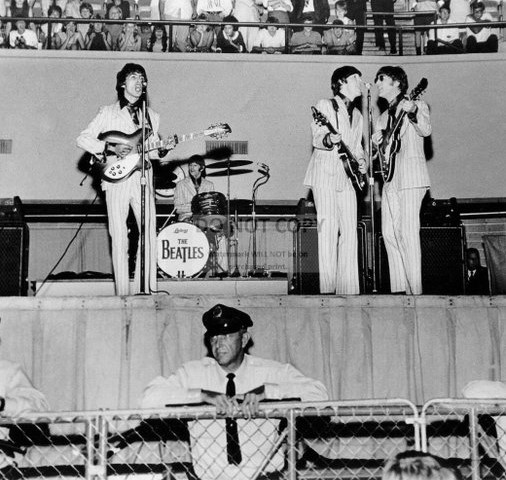

The list of performers that played at the Mid-South Coliseum is extraordinary and includes Elvis, The Beatles, Prince, Frank Sinatra, Van Halen, Ike and Tina Turner, Ozzy Osborne, The Rolling Stones, Rod Stewart, and Jay-z, among many others. Elvis Presley performed at the Coliseum on March 16, 1974, his first concert in Memphis since 1961. His next concert at the Coliseum, on March 20, 1974, was recorded for a concert album, Elvis Recorded Live on Stage in Memphis. Presley returned the following year at the close of his second tour, on June 10, 1975, and his last performance at the Coliseum was on July 5, 1976.

Michael Jackson & The Jacksons kicked off their Triumph Tour by performing at the arena on July 8, 1981. English heavy metal band Judas Priest filmed a 1982 concert at Mid-South Coliseum, later released on video. In 1997, singer Celine Deon performed at the Mid-South Coliseum, and also filmed a concert video, Live in Memphis. Of all the performing artists that graced the stage at the Mid-South Coliseum, James Brown played more concerts than anyone else at the Mid-South Coliseum.
The introduction of modern professional sports in Memphis came by way of the Mid-South Coliseum. In 1964, the Memphis Wings, an affiliate of the Detroit Red Wings, played their first home game at the arena. They were the first professional ice hockey team to play in Memphis and played every game at the Mid-South Coliseum. For a brief period in 1965-66, the Coliseum was also a regular home court for the NBA’s St. Louis (now Atlanta) Hawks. These games afforded residents an exceedingly rare opportunity in those days in Memphis of viewing basketball teams with both white and black members on the same team. The Mid-South Coliseum was also well known for professional wrestling as the home base for the United States Wrestling Association and its predecessors. Memphis wrestling legend Jerry “The King” Lawler headlined hundreds of shows at the facility, where they held weekly wrestling shows that regularly drew over 10,000 people from 1970 to 1991.
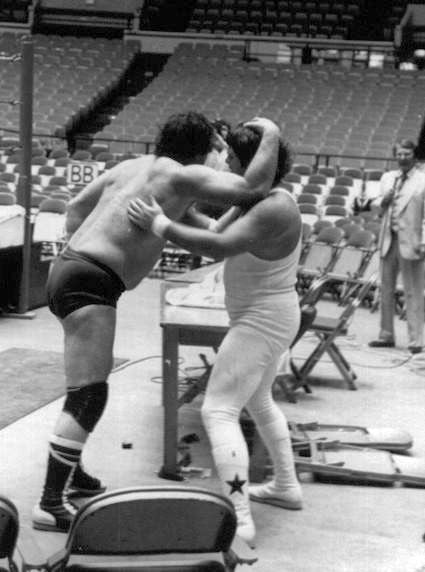
In 1982, Jerry “The King” Lawler wrestled a match against comedian Andy Kaufman ending in disqualification. Once the bell chimed, Kaufman played his cowardly heel persona, running around the ring to avoid Lawler. A frustrated Lawler, the city’s heroic champion, grabbed a microphone and asked Kaufman if he came to wrestle or be an ass, which caused the crowd to erupt in cheers. It began one of the greatest ruses of all time with two men who captivated a city and puzzled the nation. Kaufman pushed the envelope of performance art on a real-time stage. His whole wrestling persona was performance art at its peak – inside and outside of the ring. He wanted to be the biggest heel character he could be and make everyone in the city hate him, and he did it. Kaufman’s antics would later be immortalized in the R.E.M. song “Man on the Moon” and in a 1999 Jim Carrey movie by the same name.
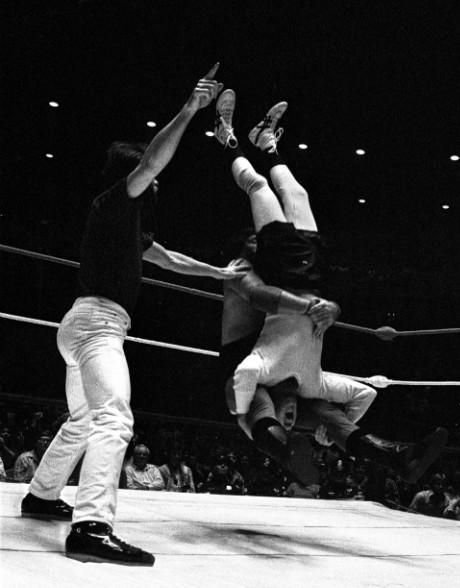

After the match, Kaufman was taken away on a stretcher and even insisted on paying $250 for a real ambulance to arrive to further legitimize the injury angle. The incident would become the impetus for a feud that culminated with the two appearing together on Late Night with David Letterman a few months later. During the segment, an altercation ensued, since revealed to be staged, in which Lawler slapped Kaufman who responded by shouting profanities and throwing hot coffee at Lawler before storming out of the studio. The act is largely credited with giving rise to modern-day professional wrestling. Two years after the ruse began, the entertainer died suddenly from rare cancer at the age of 35 at Cedars Sinai Medical Center in Los Angeles.
In 1987, Austin Idol defeated Jerry “The King” Lawler in a steel cage hair versus hair match, causing the audience to start a riot. Months later, on May 9, 1988, Lawler won the AWA World Heavyweight Championship title by defeating Curt Hennig at the Coliseum. After the win, then-mayor Dick Hackett proclaimed May 9th “Jerry Lawler Day” in Memphis and Shelby County. The weekly Monday night wrestling shows sold out for years until insurance discomfort over blood ended professional wrestling at the Coliseum.
On April 27, 1991, the People’s Convention convened in the Mid-South Coliseum to select a consensus Black candidate for Memphis mayor. “Considered one of the most successful grassroots exercises in democracy in Memphis history,” the convention chose Dr. W. W. Herenton as their candidate. Dr. Herenton went on to defeat incumbent Dick Hackett by 146 votes, becoming the first elected Black mayor of Memphis. The watershed event at the Coliseum marked the beginning of the Black leadership of Memphis. After 172 years, Black citizens would lead the city they had built and shaped.
The 20,000-seat Pyramid Arena opened on November 9, 1991, and was the first significant competition for the Mid-South Coliseum. The Memphis State (later University of Memphis) Tigers left the Coliseum and made their new home in the Pyramid. Although considered inferior to the Coliseum acoustically, the Pyramid was able to attract larger acts with its significantly larger capacity. Nevertheless, the Pyramid and Coliseum, both owned in a City of Memphis/Shelby County partnership, were still able to coexist after the opening. The Coliseum carried financial surpluses until the late 1990s when the minor league hockey team, the RiverKings, announced its move to the new DeSoto Civic Center Arena (later known as the Landers Center) for the 2000 season.
The Vancouver Grizzlies relocated to Memphis in 2001 and became the Memphis Grizzlies. As part of the relocation package, the City of Memphis agreed to build a new arena, later named the FedEx Forum, which the Grizzlies agreed to manage. The city and the Grizzlies agreed to a non-competition covenant which gave the Grizzlies a say in which events would be allowed at the Pyramid and the Coliseum. Adding to the competition from the extra seats at the Forum and the Pyramid, a contract clause restricts the Coliseum’s freedom to host events.
In 2005, the Department of Justice settled with the City of Memphis to remediate Americans with Disabilities Act violations in its facilities, including the Mid-South Coliseum. Citing arena competition, the City of Memphis closed the Coliseum to the public in 2006. When the Coliseum closed, it was operating in the red, and new venues like the Pyramid and the Desoto Civic Center made the facility seem obsolete. The roughly 24,000-square-foot arena floor has served as a storage facility for the City of Memphis.

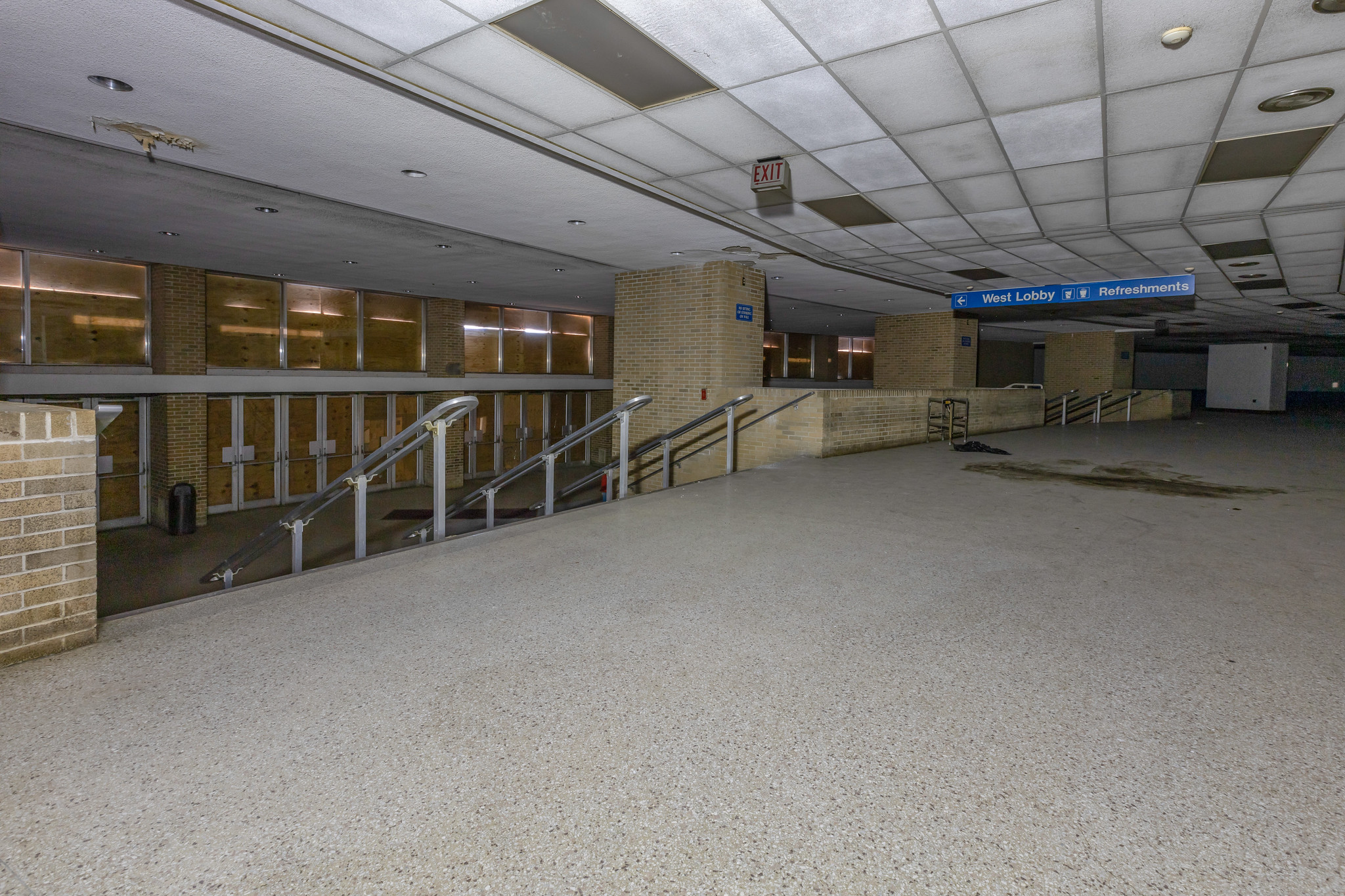

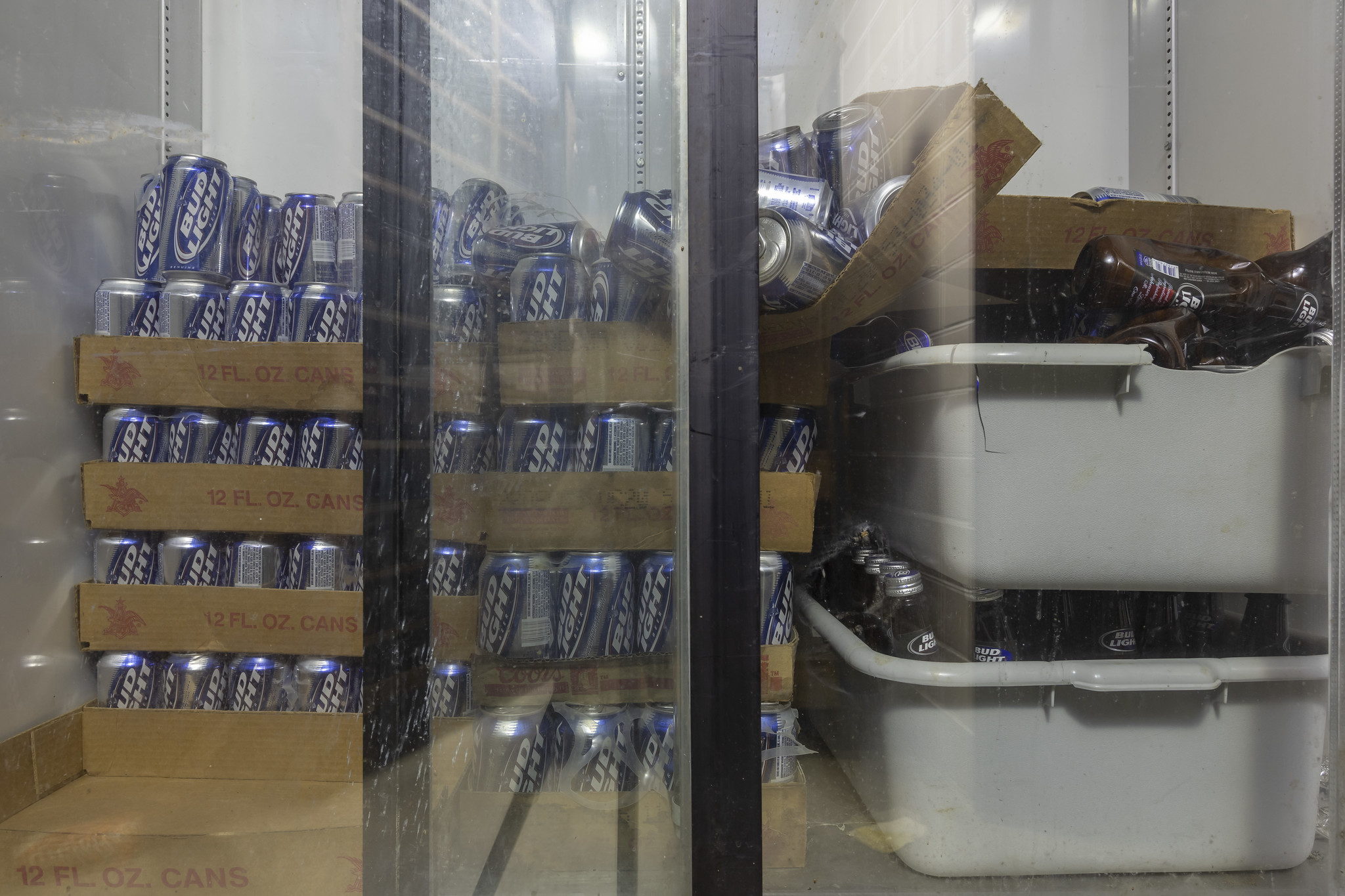

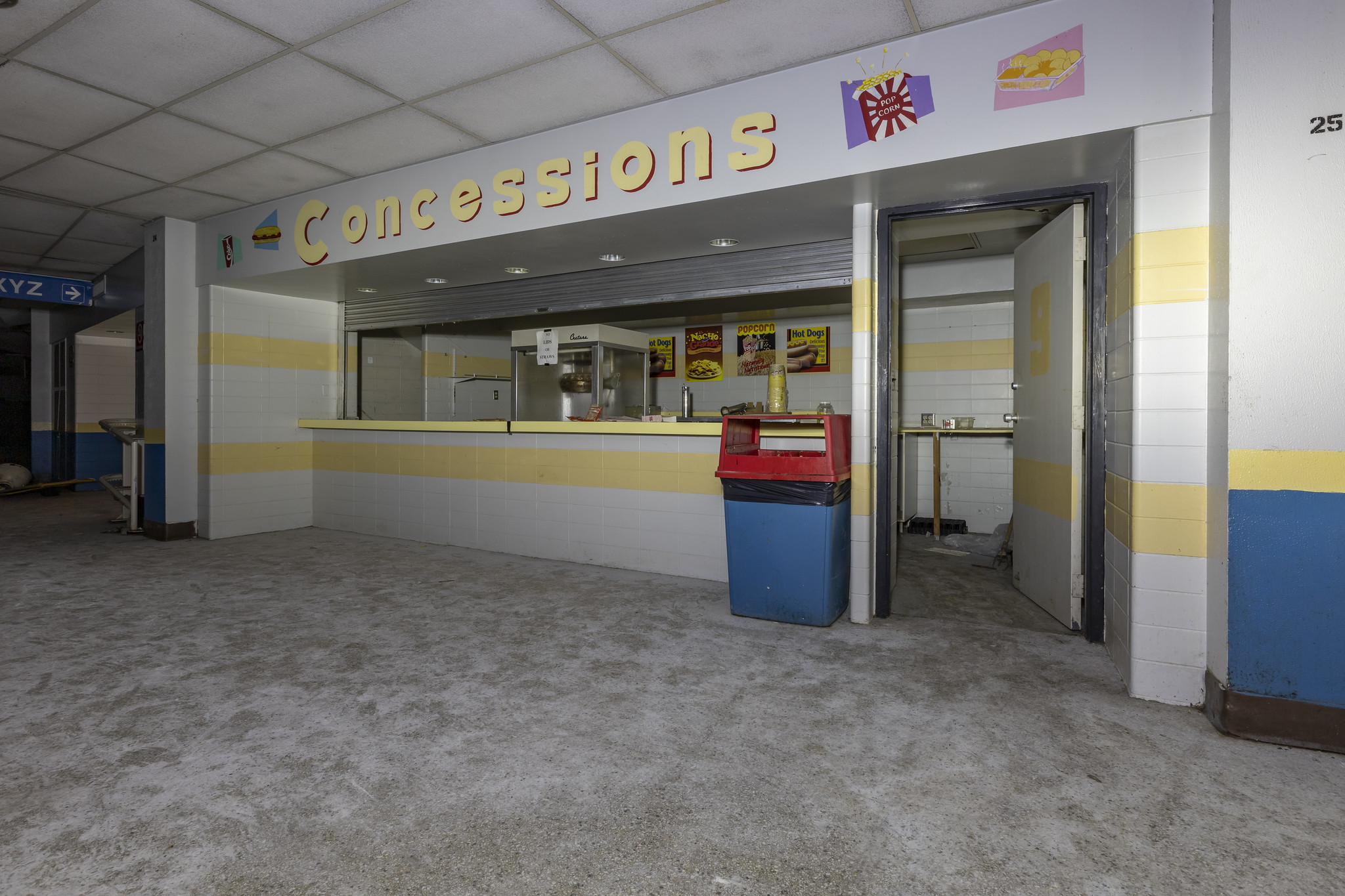


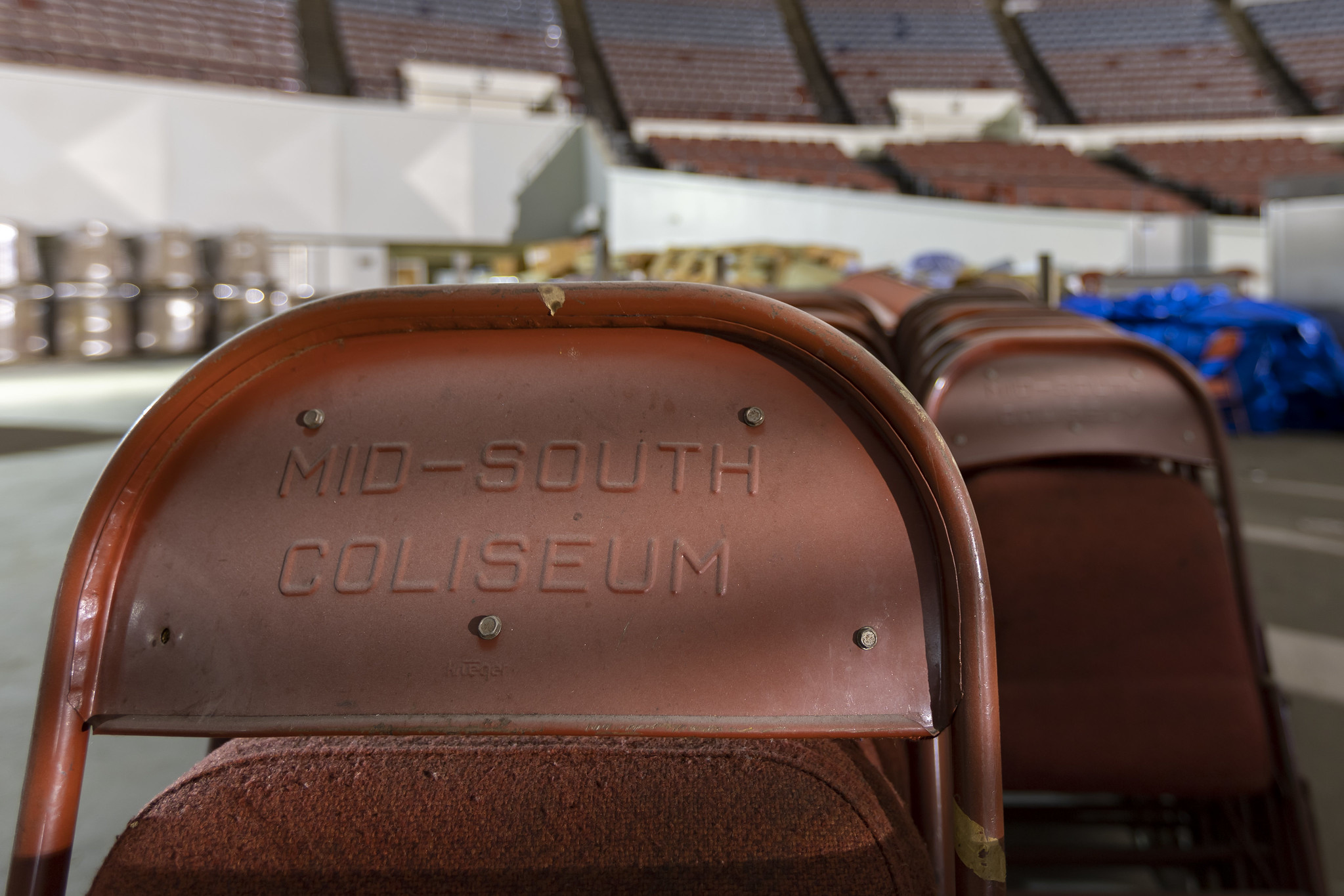

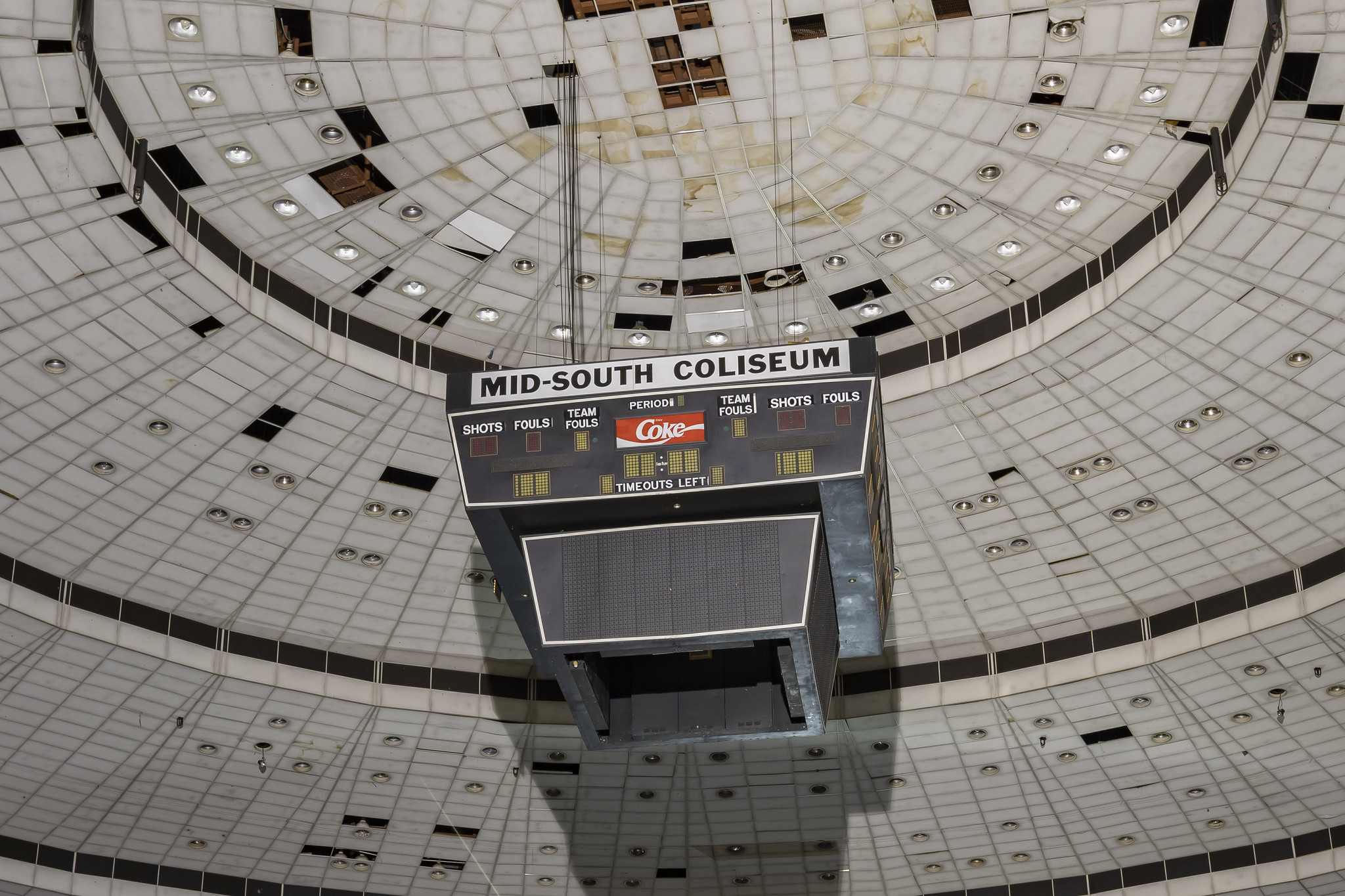
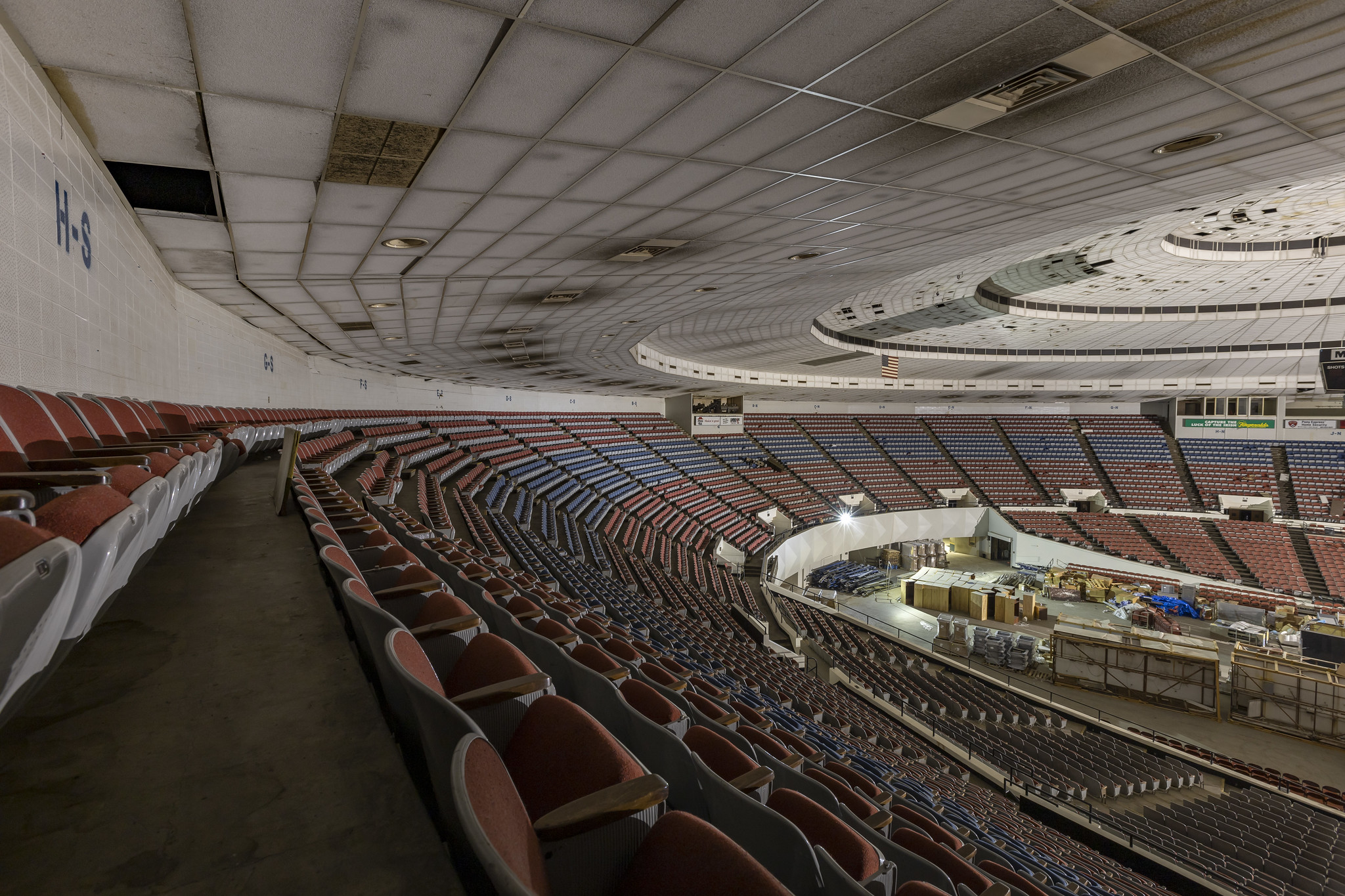


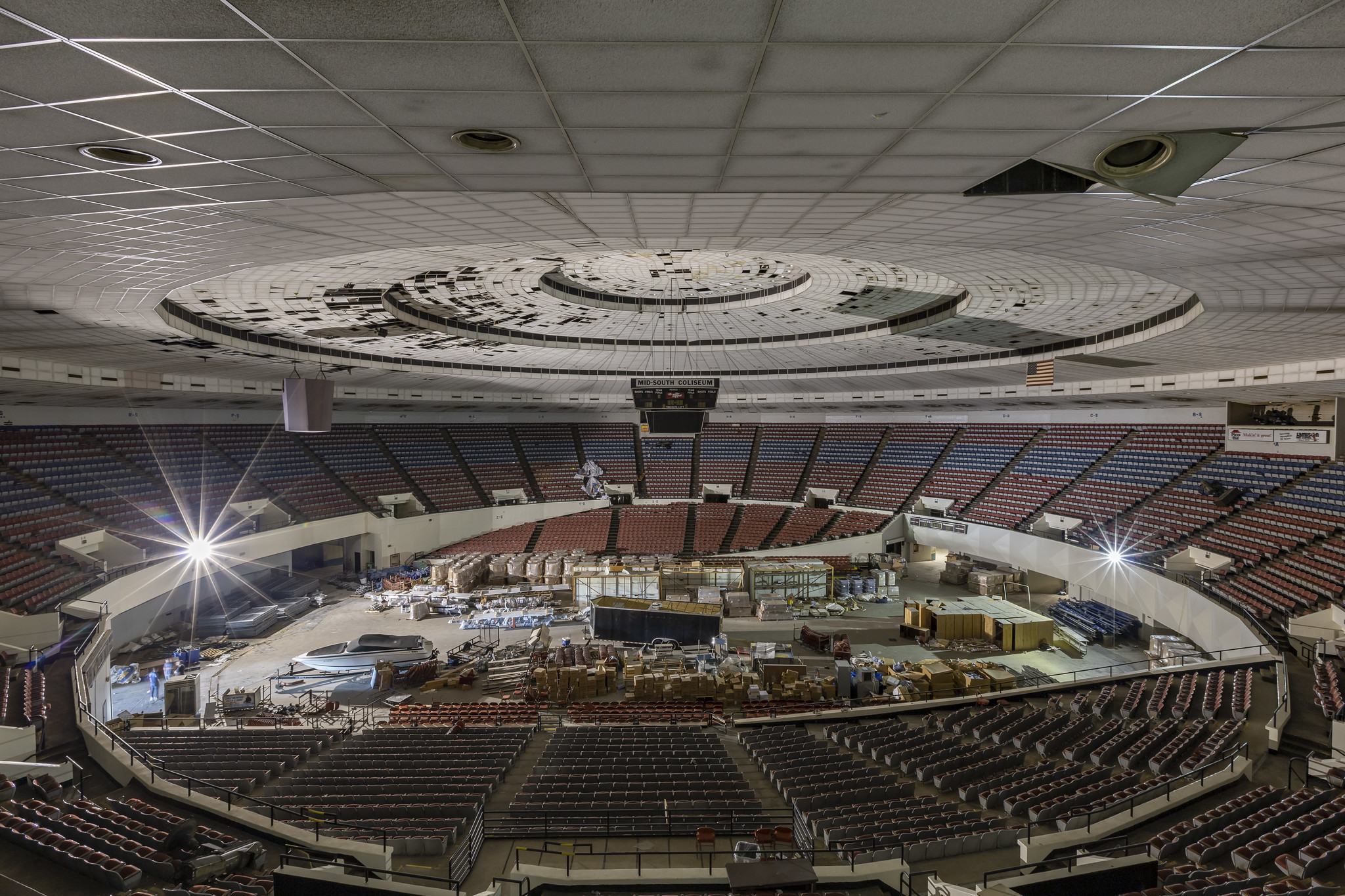
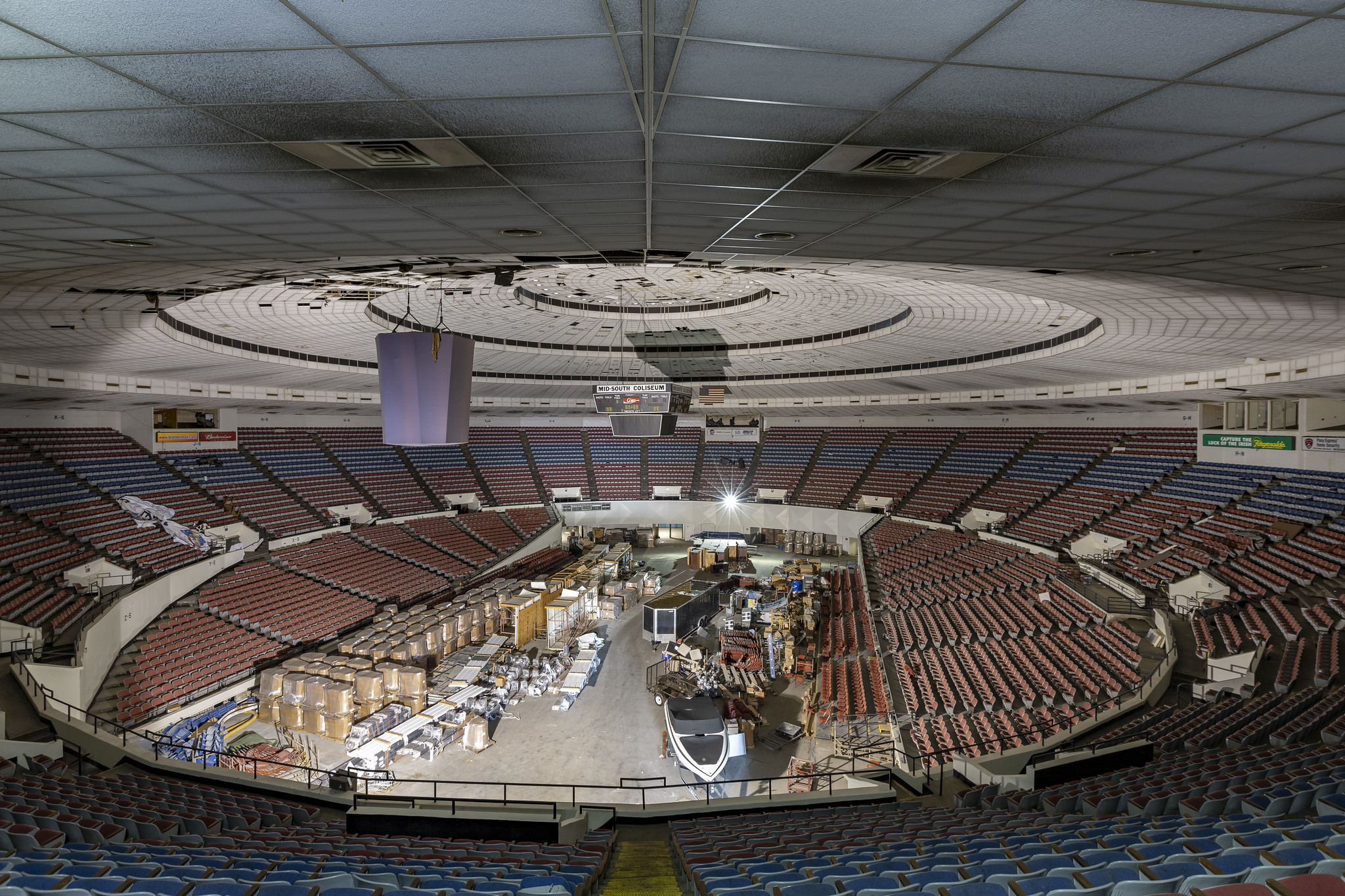
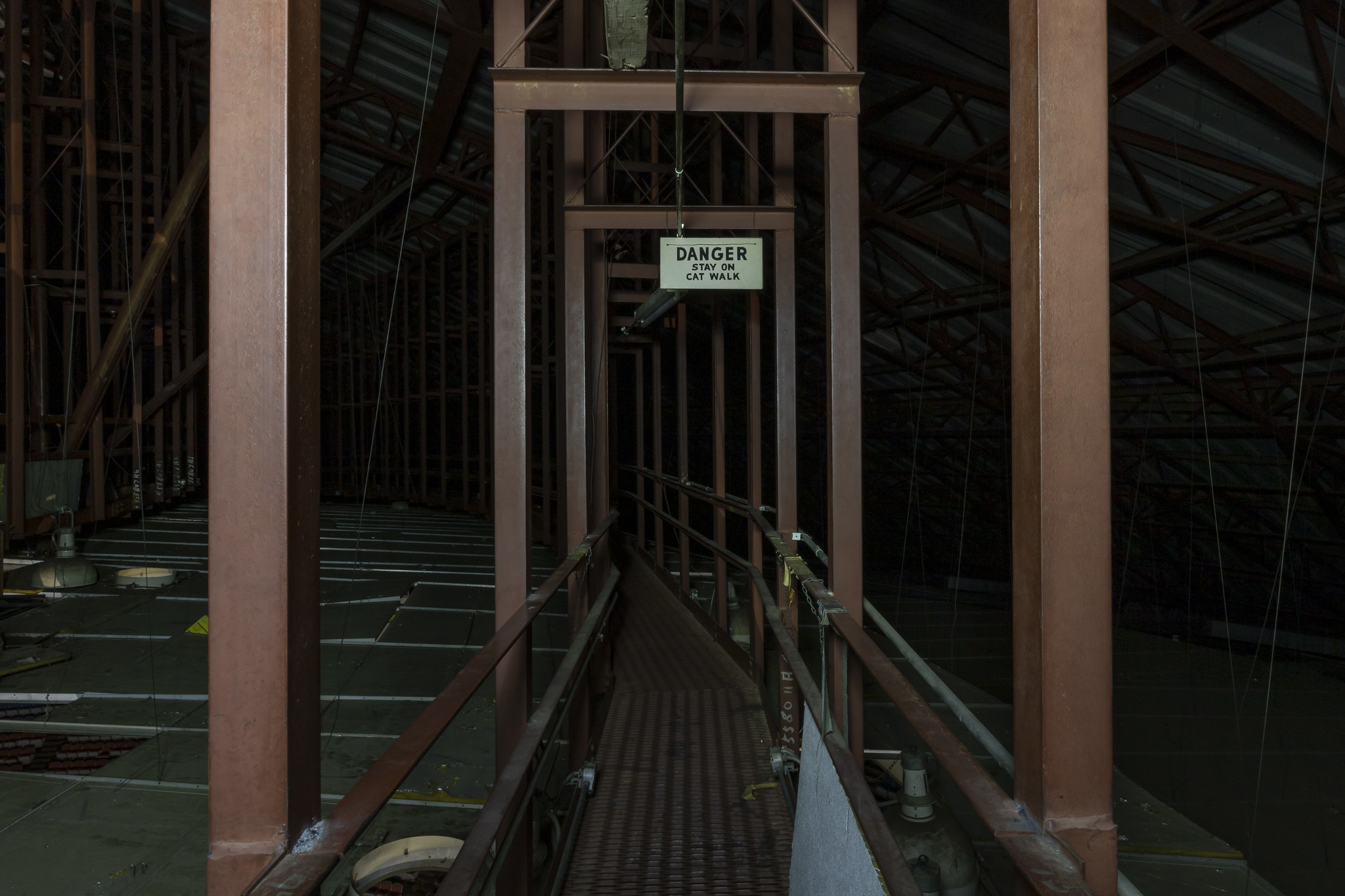


Thank you for reading. Please share the blog with your friends. I appreciate the support.
You can find me on Facebook, Instagram, Twitter, and TikTok. For more amazing, abandoned places check out my photography books. If you would like to receive the Abandoned Southeast blog in your email, sign up below or on the main page.

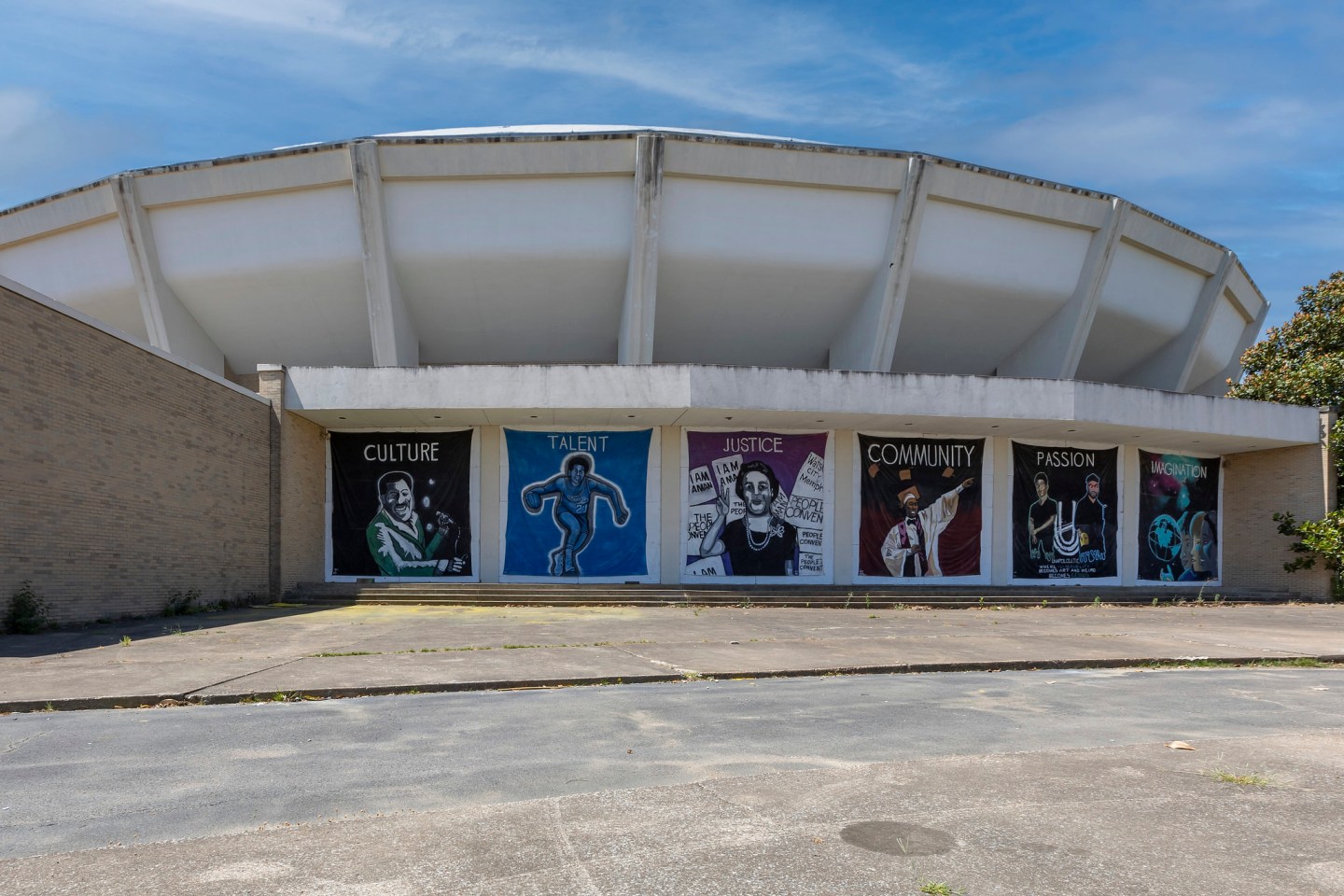
This coliseum has a lot of history and great memories. I don’t agree that it should be demolish and replaced with other ideas. Especially if it was placed in the historic registry.
LikeLiked by 2 people
Awesome write up!
LikeLiked by 1 person
Thank you!
LikeLike
I really hope they don’t demolish the coliseum. I’d much rather them spend some of that money to refurbish it and start using it again.
LikeLiked by 1 person
Yeah, you would think they could use it for something instead of it just being used for storage by the city.
LikeLike